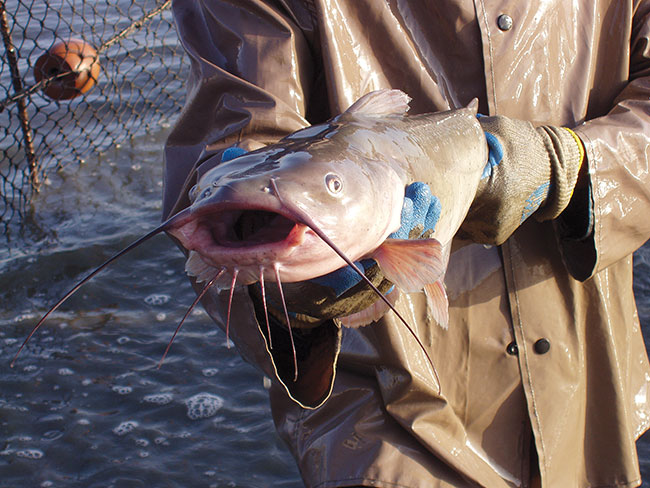
California fish and wildlife official outlines trends shaping local aquaculture
September 11, 2020
By Julia Hollister
 Channel catfish, produced at Imperial Catfish in Imperial, California. Aquaculture contributes roughly $200 million to the California economy
Photo: Dennis Faria
Channel catfish, produced at Imperial Catfish in Imperial, California. Aquaculture contributes roughly $200 million to the California economy
Photo: Dennis Faria One of the latest trends in fish farming is partly the result of COVID-19 and partly due to changes in consumer buying and cooking habits.
“The coronavirus has most definitely affected the state’s aquaculture,” said Randy Lovell, state aquaculture coordinator, California Department of Fish and Wildlife. “Since so much of our seafood consumption is channeled via food service, the closing of restaurants puts a strain on finding outlets for production. Shelter-in-place orders have also kept anglers home more than normal, resulting in fewer orders to stock fishing waters.”
Reducing production not only decreases sales but also spending on feed, labor, and energy. The virus puts standing inventories at risk. Fish can be fed less but not to the point of compromising their health, so they continue to grow, and in extreme cases, can push production system capacities (and cash reserves) to their limits.
This can affect production and other operations, as well. As formats and handling practices change – for instance, distributing frozen instead of fresh product – a different set of regulatory practices need to be met and consumer preferences identified.
Innovation focal points
Lovell points out other trends are emerging, too. There are three main ones.
First, tighter rules regarding the use of water in a state that sees cycles of drought, higher costs tied to groundwater pumping, and increasing competition for all freshwater sources have added to the incentives to use this natural resource more efficiently, for instance, through recirculation.
Second, advances in genetic techniques open new opportunities in the search for better fish health management strategies, production yields, and other benefits. However, the challenge to regulators is keeping pace with the rate of innovation and the evaluation and management of risk that accompanies the adoption of such new techniques.
A third area of focus is the search for fish feed protein substitutes for fish meal/oil. Many alternative ingredients have been identified, but challenges remain in terms of supply at the scale needed now and in the future.
The California Fish and Wildlife Department is working with the state’s aquaculture farms to develop sustainable, eco-friendly practices.
The process of registering inland commercial aquaculture facilities with the department includes a review of species, facilities, methods, and locations relative to adjacent wildlife, habitat, and watersheds to avoid or minimize harm. Registration needs to be renewed on an annual basis.
“There has been interest in expanding aquaculture for the last 30-40 years, and the efforts have met with varying success at various times and locations,” Lovell said. “Markets for aquaculture products have been evolving during that time, with early demand in California for freshwater fish destined for stocking and recreational angler needs. A very modest amount is being processed for fresh seafood markets.”
Backyard farming
There also appears a strong interest in home-based aquaculture, sometimes coupled with hydroponic plant cultivation that ranges from hobby-scale to a level that could be commercialized at some point.
According to Lowell, new entrants into aquaculture in California are often employees of existing farms who want to venture out on their own. There are more aquaculturists diversifying into agriculture to utilize their nutrient-rich supply of water, than the opposite case where traditional farmers might move from livestock or row crops into fish, he noted.
“Many who pursue this at home are seeking control over quality amid concerns about imported product, or simply the gratification (and perhaps the economy) that comes with providing for oneself. Unfortunately, the hard work it takes to be successful in fish husbandry is not for everyone, so there are many who don’t continue beyond the hobby,” he said.





